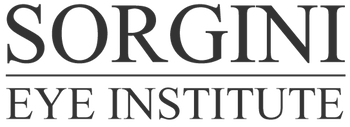Emmetropia
In the normal sighted eye, light entering the eye from a distant source is focused by the cornea and to a lesser extent by the lens. The image is focused sharply on the retina (the photosensitive layer of the eye that works like the film in a camera) and the patient sees well without assistance
Myopia »
In the nearsighted eye, light entering the eye from a distant source is focused too strongly for the length of the eye. The image is focused in front of the retina but by the time the light reaches the retina, it is blurry and out of focus. Distant images are blurry and near images are in focus. Glasses, contact lenses, PRK and LASIK may be used to correct this condition
Hyperopia »
In the farsighted eye, light entering the eye from a distant source is focused too weakly for the length of the eye. The light is not even focused by the time it reaches the retina and the retinal image is blurred. Fortunately, in younger patients, the lens is able to provide additional focusing power that may allow a patient to see at a distance or even near without assistance. This lenticular focusing power decreases with age. If the hyperopia is too great, or if the lens cannot provide enough focusing power, the resulting vision is blurred. Glasses, contact lenses or LASIK may be used to correct this condition
Astigmatism »
Astigmatism is a condition in which the cornea has two or more different focusing powers. This causes part of the focused image to be focused further in front of the rest of the focused image. Most corneas have at least a little astigmatism. It may be present alone or in combination with myopia or hyperopia. This can be corrected with LASIK or PRK whether alone or in combination with other refractive errors
Presbyopia
In a normal healthy eye, the lens is able to change shape to give additional focusing power when the eye is required to fixate on near objects. With age, the lens becomes more rigid and less able to focus on close objects. This occurs around the age of 40 to 45 years, where the lens is unable to focus at a comfortable reading distance. However, patients with myopia are often able to remove their glasses and see near objects better than others of a similar age who don't require glasses to see distant objects. With successful laser vision correction, patients who were once myopic become similar to patients who do not require distance glasses and will likely require glasses for near vision at age 40 to 45. Monovision is an option that allows one eye to be corrected for distance, and the second eye undercorrected for enhanced near vision

